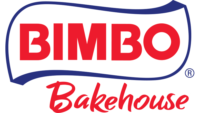The current food market in America—and well beyond—presents unprecedented challenges for consideration. And a climate of shifting consumer patters dictates a fresh approach toward market strategies.
For 2022, in a new series of features, Snack Food & Wholesale Bakery (SF&WB) is providing a wide perspective on anticipated 2022 industry trends of note (for a look at the first two installments of this series, see “2022 Snack & Bakery Outlook: Foodservice Focus” and IRI insights into 2022 snack and bakery trends”).
In this latest installment, SF&WB connected with Marie Claude (M.C.) Laprade, vice president, foodservice strategy/customer marketing, and Jennifer VanDewater, vice president, health, authenticity, and strategic insights, Rich Products Corp., Buffalo, NY.
Douglas J. Peckenpaugh: How has the ongoing COVID-19 pandemic impacted American foodservice?

M.C. Laprade
As public health and safety became the initial leading concern and drove increased demand for online ordering and off-premise takeout, delivery and curbside options, quick service restaurants (QSRs) and other foodservice segments with takeout and delivery systems already in place were in the best position to support the surge in off-premise demand. Over the past two years, we have seen that consumers have grown used to the convenience off-premise food solutions provide, so demand continues in this area.
Consumer spending on food-at-home vs. food-away-from-home has continued to fluctuate throughout the COVID-19 pandemic. But even as we closed out 2021, USDA data shows reopening continues to fuel consumer spend on food-at-home which is at 52%. Will this continue with record high inflation and increased COVID cases impacting consumer spend? This is a topic that the Rich’s Strategic Insight team continues to monitor.
The long-term impact of COVID-19 on the foodservice industry is most visible today in rising costs driven by unprecedented inflation rates, continued labor challenges and ongoing supply chain disruptions. Early in the pandemic, the foodservice and hospitality industries were some of the hardest hit due to pandemic related shut downs. According to National Restaurant Association, more than 110,000 bars and restaurants in the U.S. closed for business either permanently or temporarily in 2020. These closures resulted in nearly 2.5 million jobs eliminated from pre-pandemic levels.
Fast forward to October 2021, the National Restaurant Association once again reported employment gains across foodservice segments as many establishments started to reopen. But even with these gains, all major foodservice segments remained below pre-pandemic staffing levels.
On top of these operator headwinds, the consumer continues to demand an elevated experience. Consumers want their physical on-site experience to match their online virtual experience with foodservice brands which require major investments. All result in margin compression for the operator, including investment in off-premise models and automation to offset labor shortages while also managing rising costs due to unprecedented inflation rates, rising costs of retaining labor, etc.
DJP: How has the shift toward more people working from home changed foodservice strategies for the morning daypart?
MCL: The business and industry segment has been significantly impacted by COVID-19 and continues to influence how many businesses across industries evaluate new work models and begin adopting permanent hybrid models. Foodservice segments focused on the morning daypart were forced to quickly pivot when the pandemic drove remote work for daily commuters.
DJP: How are foodservice operators adjusting lunch and dinner daypart strategies to accommodate more to-go/carry-out menu items?
MCL: A focus on digital acceleration, multiple off-premise ordering options including menu optimization and loyalty programs are all strategies that can support adaptable carry-out trends:
- Focus on digital acceleration – investing in apps and digital ordering systems for consumers to easily place orders from anywhere.
- Multiple off-premise ordering options – offering delivery, fast food and take out restaurants reinventing space for less indoor dining, adding in more drive-thru and/or curbside pick-up locations and options make it easier for consumers looking for the convenience of bringing the restaurant experience to their home.
- Off-premise menu optimization – ensure food quality for the at-home experience through special off-premise menus that focus on items that travel well, investing in packaging and streamlining the process for delivery and pick-up orders. We are also continuing to see operators launch other tactics for additional off-premise revenue, including: larger family-style meals on their menus, launching a virtual brand within their operation or investing in ghost kitchen space for delivery.
- Loyalty programs – revamping loyalty programs to increase personalization through personalized menu recommendations and offers to entice customers to visit more often.
DJP: How are you helping foodservice operators streamline back-of-house efficiencies?

Jennifer VanDewater
Additionally, Rich’s is continuing to invest in innovation towards further and fully finished items that hit on key consumer trends, including plant-based snacking solutions. New innovations in this area include our savory vegetable spreads which are a thaw-and-serve solution requiring no chopping, blending or mixing. Also, new sizes in our parbaked gluten free cauliflower pizza crust in a convenient freezer-to-oven format are suitable for a variety of applications including pizzas, sandwiches and appetizers.
DJP: What do you see as the top foodservice bakery trend to watch for 2022 and why?
JV: Fully finished and further finished bakery options to support labor optimization.







